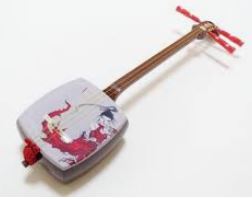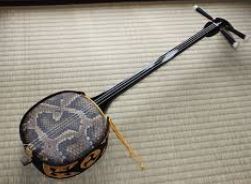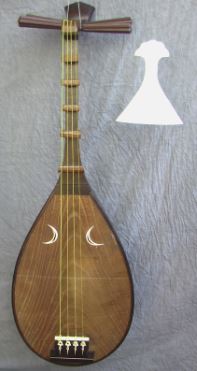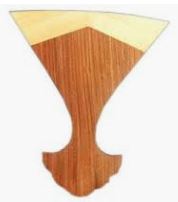
|
|
Okinawan Sanshin and Japanese Shamisen
published Nov 18, 2019
|
"Music, if that beautiful word must be allowed to fall so low as to denote the strumming and squealing of Orientals, is supposed to have existed in Japan ever since mythological times." That extreme comment made by Professor Basil Hall Chamberlain, author of the book Japanese Things exemplifies the Western attitude toward traditional Japanese music. The traditional music of Japan does sound different to Western ears and like any new appreciation must be cultivated. On first hearing, the plucked strings of the koto and shamisen sound twangy and foreign, but after the unfamiliarity has passed fulfillment follows.
|
The Okinawan and Japanese shamisen vary in design, construction, and method of strumming. The Okinawan sanshin is smaller. Its neck is traditionally made from laquered ebony and the body is made of Chinese black pine. Unique from the Japanese shamisen, the sanshin body is covered with snake skin and is distinctly more oval.
The Japanese shamisen is made of different wood and is covered with cat skin. Cheaper mainland models may even be covered with dog skin. A half-moon of skin is added to the top center of the body, lying underneath the strings, for extra protection. Both instruments have three strings and three pegs for tightening the strings. The pegs are usually made of wood or ivory. The most obvious difference in the two instruments is the manner of playing. The Okinawan sanshin is plucked with a small pick like a banjo. The shamisen is played with a large pick derived from the original biwa plectrum. When the snakeskin covered sanshin was introduced to the mainland, the first musicians to be attracted to it were the biwa players. They began picking it with the large biwa plectrum but the snakeskin did not hold up very well under the pressure. Cat skin was found to be more durable and produced a different sound that was more appealing to mainlanders. A variety of shamisens exist and each variation is used in unique performances. The thickness and tightness of the strings and the tunings vary with different occasions. The concept of happy and sad tunings is the foundation for shamisen music. This standard is similar to the major/minor concept used in Western music. The range of tune extends from solemn to festive. The original music of the shamisen was in the narrative form. The instrument is used to accompany puppet theater, Kabuki drama, and in the performance of traditional folk songs. The shamisen is not a remnant of ancient Japan but continues to create music for contemporary tastes. The unfamiliarity of shamisen music, in general of any Japanese traditional music, strikes in Westerners a view of starkness. But as the drum-loke snap of the plectrum or the twangy plucking of the fingers haunts listeners, the simplicity and distant quality of the shamisen and the sanshin emerges as a fresh break from the chaotic, instrumental flurry of Western music. HERE IS a LEGEND about the advent of the sanshin - invented by the son of Chira who owned Aka Inuko.
I finally bought myself a SANSHIN - Yatta!! Check it out. |
©2019 Contact: ClickOkinawa.com




